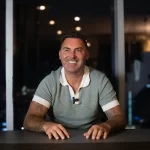
In the realm of business communication, a dynamic video can be a game-changer, effectively introducing your brand to clients and enticing prospective employees. Crafting a video that represents your brand’s ethos and appeals to your audience demands strategic planning and creativity. This quick guide provides a helpful roadmap to creating an impactful business video that can enhance your brand’s presence and attract the right attention.
Understand Your Viewers
The video creation journey begins with an insightful and in-depth analysis of your audience, a step that cannot be overstated in its importance. Recognizing the nuances of your audience’s expectations, unique preferences, and specific interests lays the groundwork for a video that resonates on a personal level, whether the end viewer is a potential client or a future team member. Armed with this critical understanding, the content of your video can be sculpted with precision, ensuring that each element, from script to visuals, is tailored to engage, connect, and leave a lasting impact on the viewer, aligning perfectly with their anticipations and aspirations.
Reveal Your Business Culture
Illuminating the distinctive culture of your business acts as a beacon, distinguishing your brand in a crowded marketplace. By bringing the day-to-day vibrancy of your company’s life into view, illustrating the genuine interactions among team members, and providing a window into the operational ethos that drives your enterprise, you create a visual narrative that goes beyond mere corporate presentation. This approach forges a compelling and authentic storyline that not only captivates potential clients with its relatability but also resonates with prospective employees.
Assemble Your Video
Fortunately, you can create free videos by utilizing online tools. Start by selecting and organizing your media elements, including images, videos, and audio clips, ensuring they are well-suited for your project’s theme and audience. During the video creation process, utilize drag-and-drop tools to place these elements into a timeline, adjusting their timing and transitions to ensure a smooth flow of content. Additionally, enhance the audiovisual appeal of your video by incorporating filters, text overlays, and animations that complement the narrative and engage viewers effectively
Distill Your Message
Identifying the central theme of your video is imperative. Decide on a message that encapsulates what your company stands for, be it your storied heritage, your groundbreaking services, or your dedication to social responsibility. The selected theme should resonate with your audience and stay true to your brand’s core values. A clear and compelling message ensures your video remains focused and impactful, avoiding unnecessary distractions. By honing in on a specific theme, you provide viewers with a coherent and memorable takeaway.
Timing is Everything
Audience engagement hinges on the delicate balance of content and duration, where the length of your video can be the determining factor between captivation and disinterest. Striking the perfect balance is paramount; a concise yet informative video — typically between one to three minutes — can efficiently communicate your message while respecting the viewer’s time. This optimal timeframe is the golden standard for maintaining viewer interest, ensuring your message is received without overstaying its welcome.
Harness the Power of Storytelling
Integrating storytelling into your business video can significantly enhance its impact. Craft a narrative that not only conveys your message but also evokes emotions and creates a connection with your audience. Whether it’s a story about your company’s journey, a customer success story, or a day-in-the-life glimpse of your team, storytelling makes your video memorable and engaging. A well-told story can transform mundane content into something extraordinary, making your brand more relatable and trustworthy. It bridges the gap between information and emotion, fostering a deeper connection with viewers.
Choose Where to Post
When deciding where to share your business videos, it’s crucial to choose platforms that maximize visibility and engagement. Posting your video on popular social media sites like Facebook and YouTube can significantly increase its reach and impact, tapping into large audiences actively seeking content. Additionally, adding your video to your Google Business listing can enhance your online presence, giving potential customers a dynamic look at what your business offers. This strategic placement boosts your visibility and strengthens your professional reputation by providing a comprehensive visual representation of your business. To maximize engagement, make sure to tailor your video content to fit the specific audience and format of each social media platform. This approach can significantly enhance your video’s performance and reach. For more insights on social media management and best practices, check out this resource.
Draft a Visual Plan
A storyboard serves as the strategic framework for your video, meticulously detailing each scene to forge a narrative that is both coherent and compelling. This foundational step is instrumental in orchestrating the visual odyssey, ensuring that every transition, every frame, and every visual element is methodically plotted to enhance the storytelling. By meticulously mapping this journey, the storyboard becomes an indispensable tool, facilitating a production process that effectively and efficiently conveys the intended messages, harmonizing visuals with narrative to inform the audience.
As consumers increasingly favor visual content over text-based alternatives, businesses that harness the potential of video can significantly enhance their visibility and brand recognition. Whether it’s through storytelling, product demonstrations, or customer testimonials, videos offer a dynamic and compelling way to communicate your business’s values and offerings. By effectively integrating video into your marketing strategy, you can create lasting impressions, foster greater customer trust, and set your business apart in a competitive marketplace.












